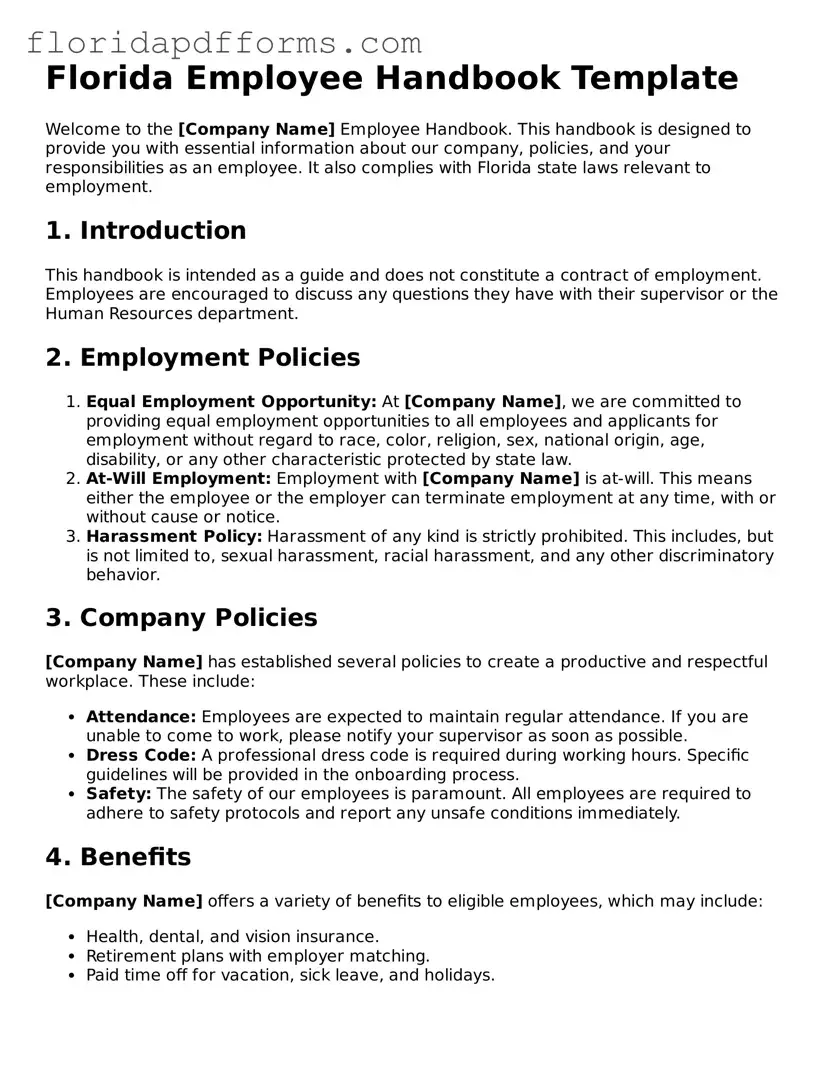Florida Employee Handbook Template
Welcome to the [Company Name] Employee Handbook. This handbook is designed to provide you with essential information about our company, policies, and your responsibilities as an employee. It also complies with Florida state laws relevant to employment.
1. Introduction
This handbook is intended as a guide and does not constitute a contract of employment. Employees are encouraged to discuss any questions they have with their supervisor or the Human Resources department.
2. Employment Policies
- Equal Employment Opportunity: At [Company Name], we are committed to providing equal employment opportunities to all employees and applicants for employment without regard to race, color, religion, sex, national origin, age, disability, or any other characteristic protected by state law.
- At-Will Employment: Employment with [Company Name] is at-will. This means either the employee or the employer can terminate employment at any time, with or without cause or notice.
- Harassment Policy: Harassment of any kind is strictly prohibited. This includes, but is not limited to, sexual harassment, racial harassment, and any other discriminatory behavior.
3. Company Policies
[Company Name] has established several policies to create a productive and respectful workplace. These include:
- Attendance: Employees are expected to maintain regular attendance. If you are unable to come to work, please notify your supervisor as soon as possible.
- Dress Code: A professional dress code is required during working hours. Specific guidelines will be provided in the onboarding process.
- Safety: The safety of our employees is paramount. All employees are required to adhere to safety protocols and report any unsafe conditions immediately.
4. Benefits
[Company Name] offers a variety of benefits to eligible employees, which may include:
- Health, dental, and vision insurance.
- Retirement plans with employer matching.
- Paid time off for vacation, sick leave, and holidays.
5. Acknowledgment of Receipt
By signing below, you acknowledge that you have received and read the [Company Name] Employee Handbook, and you understand the policies and procedures outlined within.
Employee Name: ______________________
Employee Signature: ______________________
Date: ______________________
6. Contact Information
If you have questions or need further assistance, please contact:
Human Resources Department
Phone: ______________________
Email: ______________________
Address: ______________________
Thank you for being a part of [Company Name]. We look forward to a productive and positive working relationship!
